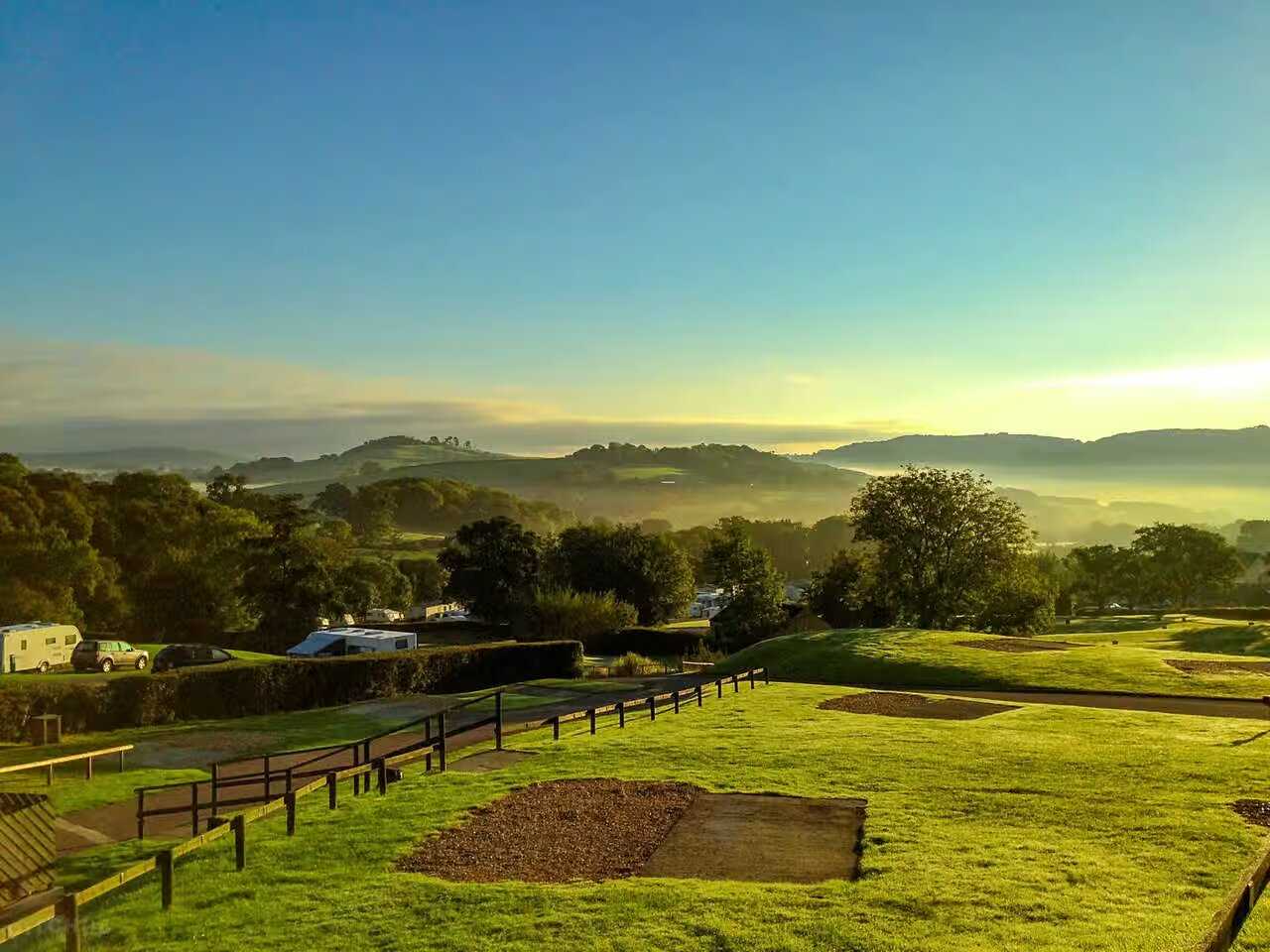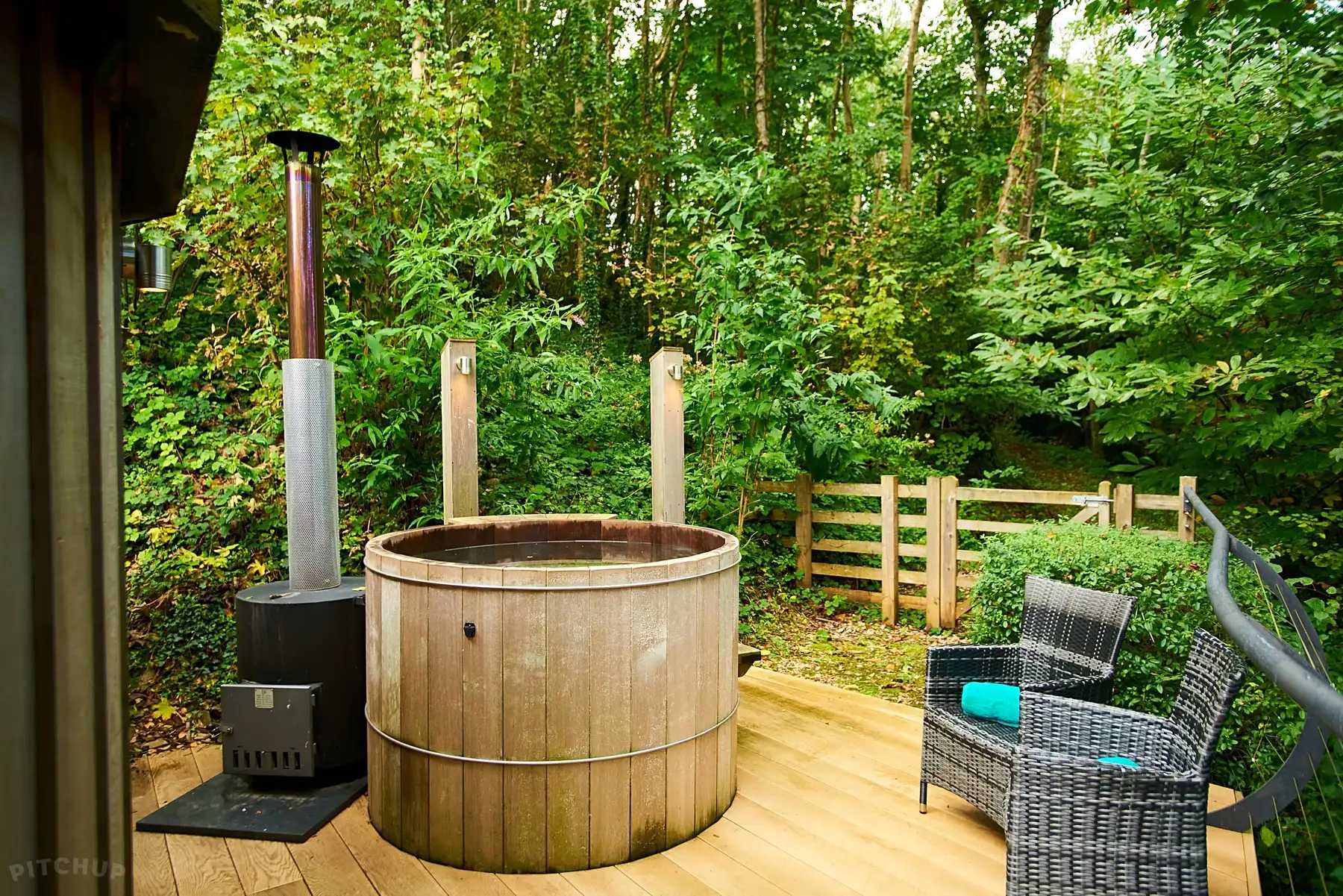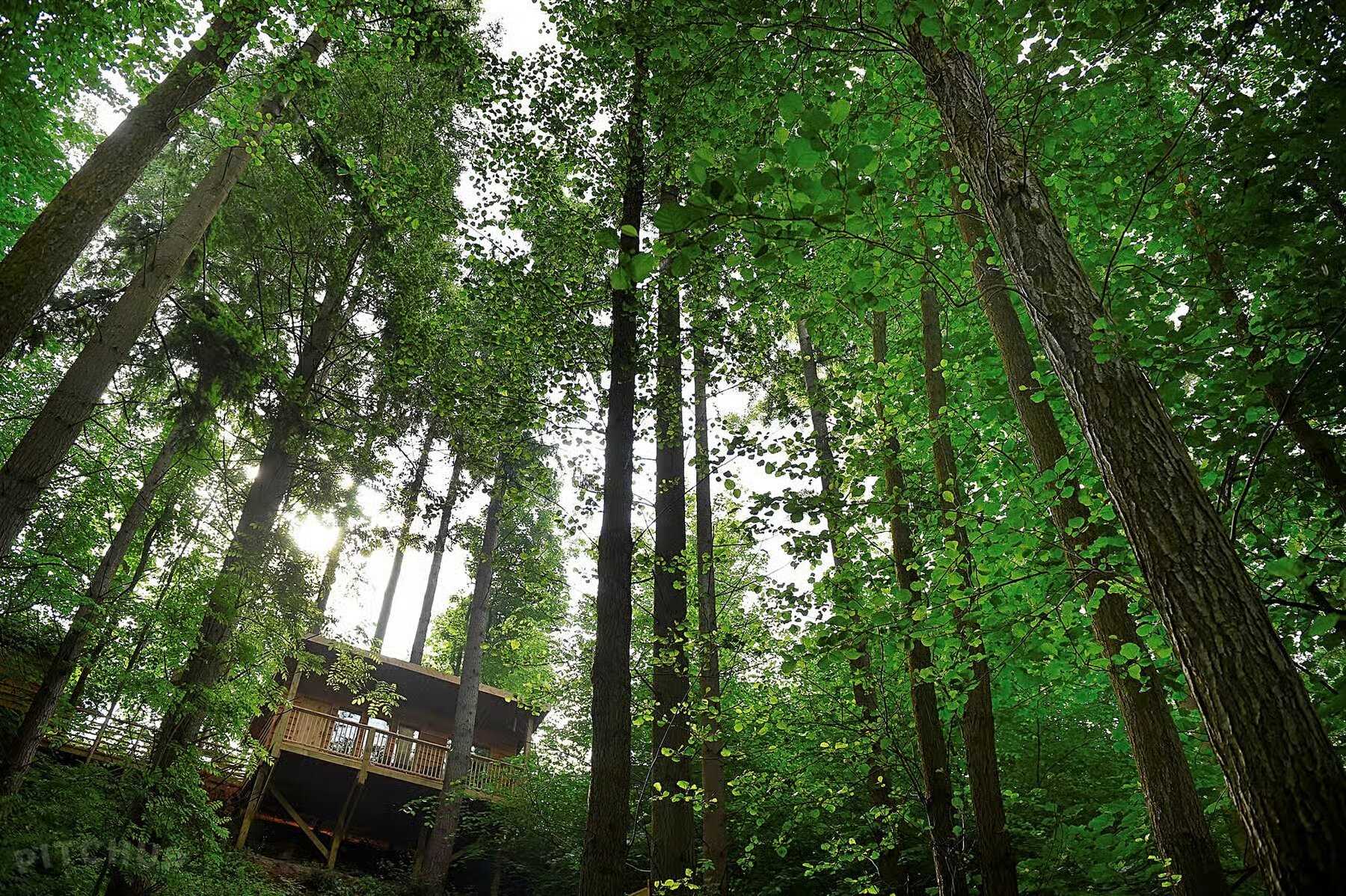Tips for buying a glamping pod for your campsite business

Why buy a glamping pod?
Since the pandemic and the subsequent restrictions on overseas travel in the last few years, the demand for glamping holidays in the UK has grown year on year. At the time of writing in spring 2023, this increase still shows no sign of slowing down. In fact, the demand for glamping breaks continues to increase, with UK searches for ‘glamping holidays’ up around 12% on pre-pandemic online searches.
Add in the new trend towards staycations – for financial reasons in these times of global recession as well as concern over sustainability issues – and it is clear that luxury camping holidays in the UK will continue to be big business.
This gives current campsite owners, or indeed anyone new to the UK’s ever-burgeoning glamping industry, the potential to capitalise on the rise of glamping and to offer a ‘luxury camping’ service.
If you’re looking to buy a glamping pod for your glamping business, here’s why investing in glamping pods could be a smart move.
The advantages of owning a glamping business
As mentioned above, more and more people are opting for UK staycations as viable holiday options, whether through budgetary restraints or due to rising awareness of sustainable travel. Glamping is a solution to both these issues: outdoor accommodation tends to be cheaper than hotels and holiday lets, while holidaying in the UK offsets concerns about the CO2 emissions associated with global air travel.
When you consider that London hotel prices have risen by up to 31% from pre-pandemic levels (according to STR Global, data providers for the hotels industry), this increase in accommodation costs will see even more people turn to sustainable, local and outdoor staycation options for holidays close to nature and all its concomitant health benefits.
Here at Pitchup, we’re already seeing this happen, with UK bookings up 45% in February 2023 as compared to February last year.
So if you own a piece of land, installing glamping pods can generate additional income throughout the year. Read on to find out why glamping pods are the right choice for your camping business.

Benefits of owning a glamping business
There are several advantages to going down the ‘glamping’ route:
-
Normally associated with luxury, glamping is where ‘glamorous’ meets camping under canvas, and can therefore be sold for a higher price than simple grass pitches – but of course, there are higher market expectations to match that higher price.
-
Offering glamping options provides an opportunity to hire out accommodation all year around. Usually insulated as part of their construction and often double glazed, pods can be heated in the colder months, therefore site owners are less reliant on the short UK summer season.
-
This reduces reliance on seasonal staff, as the business can invest in an experienced, all-year-round work team.
-
Glamping pods are the ideal addition to any campsite over options such as tents and yurts, which have a shorter shelf life before becoming damaged or worn. Wooden pods are more durable and are therefore a clever long-term investment.
-
Glamping can accommodate almost anyone, from families in spacious lodges or cabins to accessible pods for the mobility impaired, so it has a wider market appeal than traditional camping.
-
Glamping pods are largely perceived as being safer than conventional canvas tents, as they can be locked from the inside and outside, ensuring that guests and their belongings are kept safe at all times.
What to consider when buying a glamping pod
As already discussed, glamping pods come with a range of conveniences or luxuries to make guest stays more comfortable. Common features found inside or around glamping pods can include proper beds or luxury inflatable mattresses, outdoor furniture, exclusive-use shower and toilet facilities, private barbecues or firepits, and well-equipped mini kitchens.
The appearance of glamping pods is vitally important when it comes to attracting guests, but above all, they should be built to last, so owners can maximise their original investment. So yes, glamping accommodation needs to look good, but it must also be durable and able to hold up against the notoriously fickle UK weather.
You will also need to have finance in place when starting out on your glamping project. Without a decent business plan, you will not be able to attract serious investors, should you need them.
Do your research thoroughly
First things first. Do your homework. Research the materials for your glamping pods, and choose a strong structural material that will last to get your return on initial capital outlay.
Consider the cost: glamping pods come in all different styles, sizes and shapes, from simple wooden units for two people right up to ultra-luxurious, cleverly designed treehouses and hand-made shepherd’s huts. And of course, costs vary accordingly.
Decide what style of pod – and how many – you need before starting negotiations with your chosen manufacturer. If you are buying more than one pod, discounts may be available on pricing.
Balance construction and cost with user appeal: what will prospective guests think of your pod? Is it visually appealing and comfortable? Does it have some luxurious aspects that differentiate it from traditional camping?
Of course, the points above are all irrelevant if the figures don’t work. Know your budget: work out your finances and produce that all-important business plan.
Choose the right pod for your business
Secondly, size matters when investing in glamping pods. What is the acreage of your prospective glamping business? How many pods do you want? You can fit more pods on site if you choose a small size, but a better, more exclusive customer experience may be had with fewer pods on site that allow more private space, a more interesting layout with landscaping and more facilities.
Whatever size or style of pod you buy, be sure to include some luxurious touches so guests feel they are getting value for money. Upmarket ‘extras’ that augment the glamping experience, like wet rooms and barbecue huts, or unusual accommodation like traditional gypsy caravans, will cost more initially but allow you to charge more per night, providing more revenue in the long term.

So what are your glamping pod choices?
The third element you must consider when starting a glamping business is what sort of pod you will invest in. Innovative new pod designs are coming on to the market all the time, and of course, you can design bespoke pods to match your individual requirements and ideas. They can be as traditional or ‘out there’ in style as you want, but obviously there is a consequence reflected in the price of manufacture.
-
Pods and eco-pods
The most common sort of glamping accommodation is the wooden pod (sustainable pods are often constructed from recycled timber), designed with a bow-shaped roof and usually offering some sort of outside decking or private garden space. Taking in the constraints of its size, what goes inside a pod is entirely up to you, but typically they will come with a few amenities and appliances, differentiating the experience from traditional camping for customers.
Pros: lower start-up and maintenance costs
Cons: their size restricts the exclusivity of the customer experience, so income revenue may be lower than other glamping options
-
High-end pods
A luxury glamping pod is usually a larger one with more amenities and appliances for a prestigious customer experience. This category can include shepherd’s huts, lodges, cabins and gypsy caravans, with add-ons including exclusive-use hot tubs or extra rooms (for example, kitchens, private showers and barbecue huts). At the very top of the scale, treehouses are becoming increasingly popular with staycationers looking for breaks surrounded by unspoilt nature.
Pros: the more you raise the customer experience benchmark, the higher the income revenue becomes
Cons: high start-up and maintenance costs
Buy from a reputable manufacturer
The final thing to bear in mind when buying glamping pods is to source a reliable and financially secure manufacturer. It can also be difficult to find a reputable pod manufacturer who shares your vision, supports your design ideas and can turn them into reality. Don’t be tempted to go with the company offering the cheapest pods, and be sure to talk to several manufacturers before committing to the project.
By this stage in your journey towards buying glamping pods, you will have decided whether you want identical pods or are looking for individual styling for each unit. It’s an important decision that will affect your choice of manufacturer, as not all of them will offer individually designed pods. This decision also impacts your finances, as customised pods will carry a greater manufacturing price.
Here are some of the best UK companies manufacturing glamping pods:
Pods, cabins and roundhouses built out of cedar.
High-end, bespoke glamping retreats and treehouses.
Creators of high-quality timber pods since 2003.
Manufactures eco-friendly, energy-efficient glamping pods.
Suppliers of bespoke pods ready to go with electrics, heating and furniture packs.
Are glamping pods a good investment?
Thanks to their relatively low start-up costs and low-maintenance pedigree, glamping pods do indeed make a good investment.
-
Glamping pods are a low-maintenance option when it comes to camping holiday lets. Canvas bell tents, safari tents and yurts get damaged or become worn after a few years, while the wooden structure ensures that pods are much tougher and durable, with a much longer shelf life.
-
Pods can be insulated and heated, meaning they can be rented out all year around, even in chilly weather.
-
The demand for glamping pods has increased steadily over the last five years. Growth in glamping bookings year-on-year on Pitchup are up by 32% from 2022, and if you go back to pre-pandemic days, bookings are up by a mammoth 70% when compared to 2019 figures.
-
Glamping bookings as a whole on Pitchup (ie. fixed accommodation including pods, lodges, cabins, huts and treehouses) are up 17% to 19th December 2022, in comparison with the preceding year.
-
There are tax benefits too. A glamping unit that qualifies as a caravan ‘provided mainly for holiday lettings on a holiday caravan site’ attracts capital allowances. This means you may be able to deduct up to the full value from your taxable profits in the first year of operation to reduce your tax bill.
Are glamping pods profitable?
Yes, glamping is a profitable business for UK campsite owners. Glamping is currently so much in demand that there are not enough glampsite nights available to book in the UK. When a glamping business is set up correctly, you may be able to draw back your initial investment in as short a time as six months, and then after that, you’re looking at profit.
Here are some facts and figures from Pitchup’s glampsites to back that claim up:
-
A new glamping site in Suffolk generated £61,000 worth of arrivals on Pitchup in summer 2022.
-
A glamping and camping site in Cornwall made nearly £100,000 in sales in its first two months.
-
Pitchup generates up to 509 pod bookings per year for each of our properties.
-
Glamping bookings on Pitchup were up 54% in February 2023 compared to the previous year, and glamping pod bookings specifically were up 57%.
Use the Pitchup revenue estimator to see the average amount earned by glampsites in your local area.
If you need any more convincing that glamping pods are the way forward for your camping business, consider the price paid per night by two adults for a glampsite stay in comparison with a traditional campsite stay:
-
The average lead price charged by glamping sites per night in 2023 is £93.46 for pods, lodges, cabins or huts.
-
For non-electric tent pitches, the average price is £23.38 per night.
Pitchup has seen that in 2022, glamping sites were on average reviewed more highly than camping sites, with an average score of 9.5 versus 9.2 for camping.
We’ve also had more than double the number of clicks on the ‘camping pod’ filter in the first quarter of 2023 compared to 2019, showing increasing demand.
So the figures speak for themselves. If you are prepared to invest upfront in glamping pods with luxury facilities, staycationers in the UK will be happy to pay a higher price for their alfresco holiday.
Do glamping pods need planning permission?
When you’re looking to start a glamping business, you’ll need to familiarise yourself with the complexity of UK planning regulations. The short answer to the question “do I need planning permission to run a glampsite?” is “probably, yes.”
Unless you qualify for permitted development or lawful use, you will need to submit a planning application to your local authority for:
-
The use of the land as a campsite or glampsite site during a specified period.
-
Any related development, including engineering works to install utilities, metalled roads, ground formation, septic tank or effluent treatment plant, ablutions blocks, offices, lighting and other facilities.
Seeking planning permission can be a complex matter and it may be worth consulting a planning consultant, solicitor or surveyor with appropriate planning expertise.
However, there are some exceptions to this rule. For example, you will not require planning permission or caravan site licence in these cases:
-
If your site joins an exempt organisation. These include recreation clubs such as the Freedom Camping Club, Wanderlust Camping Club UK and Woodland Champions, which have been approved throughout the UK to issue ‘exemption certificates’ to landowners after inspecting their glamping sites.
-
In England and Wales, if the caravans/pods are being used by a person travelling with a caravan/staying in the pods for no more than two nights, as long as:
-
no other caravans/pods are present on that land or adjoining land for the same business; and
-
caravans/pods for hire or habitation have not been present on that land (or the adjoining land) for more than 28 days in the previous 12 months
-
In England and Wales, if your site sits on a plot of five acres or more (including adjoining land that already has camping or glamping pods on it and is not built on), as long as:
-
caravans/pods for hire or habitation have not been present on that land (or the adjoining land) for more than 28 days in the previous 12 months; and
-
no more than three caravans/pods have been placed there at any time in the previous 12 months.
For more details, read the Pitchup in-depth guide to starting a glamping business.
How can I market my glamping pod?
Today, a marketing plan is crucial to the running of any successful business. Marketing will make potential customers aware of your glamping site and help them towards a buying decision. In 2023, digital marketing plays a massive role in brand exposure, so it’s important to have a presence on the internet.
As the leading online travel agency (OTA) specialising in outdoor holidays – and with more than 1,770 glampsites currently listed with them – Pitchup can help you here, with a series of fail-safe pointers to increase your market profile and win a bigger share of the glamping market. Pitchup can even tell you how to take clear and compelling photographs of your site to maximise its appeal and get more glampsite bookings.
In conclusion, are glamping pods a good investment?
Providing you take all the factors mentioned above – choose your style of pod carefully, consider your market, stick to your budget, buy from a known manufacturer – into account, there is every reason to believe that glamping pods are a great investment venture for anyone currently with a campsite business or looking to start one up.
To give your glamping business a head start in this competitive market, list it on Pitchup.

